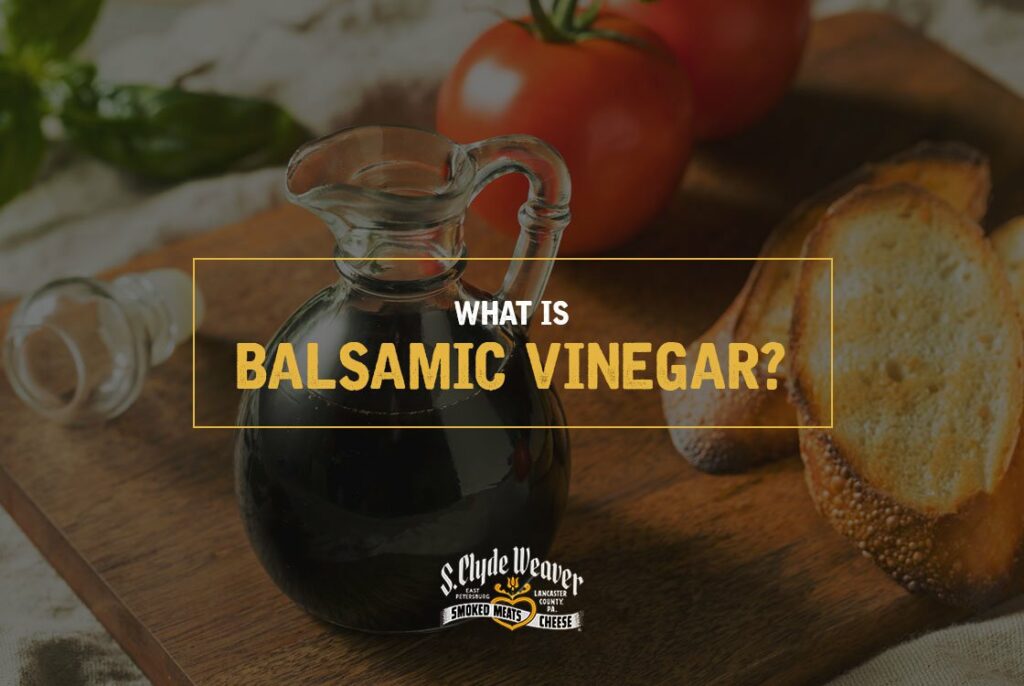
Everybody knows what home feels like, but tasting it is even better. Whether you’re gathered around the table for a Christmas ham or waking up in the morning to the smell of bacon, spending time with family over a great meal is unbeatable.
You can get your choice of meat easily at S. Clyde Weaver. Smoked ham and bacon only scratch the surface of options of quality options, no matter what time of year. You can have the taste of Lancaster County on your table to make any meal great by visiting their online store!
What is Balsamic Vinegar?
Balsamic vinegar is an Italian vinegar made from grape must, freshly crushed grape juice that includes the skins, stems and seeds. It’s very dark, concentrated and flavorful. There are many different kinds of balsamic vinegar that you will likely come across, varying in aging, ingredients and resulting color and textures.
Traditional balsamic vinegar is made in small batches because of its long aging process. It tends to be higher priced than commercial balsamic vinegar because of its high craft. If you see a DOP or PDO (Protected Designation of Origin), then it was produced in Modena or Reggio Emilia. The label confirms that the production meets the EU regulations for the product.
Balsamic vinegar of Modena PGI is imported from the Modena region of Italy. It should be used for everyday consumption, and the traditionally lower prices reflect that. The IGP or PGI (Produced Geographic Indication) indicates that it conforms to European Union production regulations.

Balsamic vinegar without a mention of Modena on the label is also intended for everyday use, but its origin is unclear. If there is no PGI label, then it may be labeled as “Balsamic Condiment.” White balsamic is similar, but instead of being dark brown, it’s light and golden.
Condimento Balsamico is made in the same style as traditional balsamic vinegar. However, batches are aged for less than 12 years, the minimum time limit for aging on balsamic vinegar to be officially certified. The requirements for balsamic vinegar are strict, so the “Condimento” usually means that the vinegar was produced outside of Modena or Reggio Emilia or aged for a shorter time than is required for the traditional vinegars.
How is Balsamic Vinegar Made?
When you’re buying balsamic vinegar, it’s important to understand the different kinds, as they each have slightly different processes for creation. There are three main types of balsamic vinegar — traditional, balsamic vinegar of Modena and commercial balsamic.
Traditional balsamic vinegar is made using a process that is thousands of years old. Balsamic vinegar has a long and rich history in the Modena and Reggio Emila regions of Italy, where the process was created and developed. Authentic balsamic vinegar has just one ingredient — grape must. Grape must is the juice from freshly pressed grapes that includes the skins, seeds and stems.
Rigid European Union standards require that grapes used for balsamic vinegar must be grown in the Modena or Reggio Emilia regions. These areas produce Trebbiano and Lambrusco white grapes. After the grapes are pressed and turned to must, the liquid is boiled over an open flame. The liquid is then placed in a wooden barrel to ferment and acidify. Authentic balsamic vinegar must age for at least 12 years. During this time, the vinegar is transferred to smaller wooden barrels made of a specific type of wood.
A special seal is included on official, traditional balsamic vinegars from Modena and Reggio Emilia called the Protected Designation of Origin (DOP). This seal is from the European Union, which sets strict rules about how the vinegar is made and marketed. In order to receive the seal, producers must conform to all of the requirements set in place.
Issues in the past arose when producers were advertising aging time as a form of misinformation for consumers. Vinegar that has aged longer is not necessarily of higher quality. As a result, the DOP designation only allows the packaging to share specific time lengths of aging. For Modena, bottles can only be labeled as having been aged for 12 or 25 years. For Reggio Emilia, bottles can be labeled with 12, 18 or 25 years. The regulations also apply to the size and shape of bottles used.
Unlike traditional balsamic vinegar, which is very expensive and sold only at specialty stores, balsamic vinegar of Modena PGI is typically sold in grocery stores. The process for traditional balsamic vinegar is not conducive to mass production, as it is expensive and time-consuming. An alternative process was developed to accommodate the high global demand for balsamic vinegar. The Italian government applied for and received a Protected Geographic Indication from the European Union for the balsamic vinegar variants.
In order to have the PGI label on the battle, the producer must meet a strict set of requirements. There are four ingredients in balsamic vinegar of Modena, unlike the single ingredient in traditional balsamic vinegar. In addition to the grape must, balsamic vinegar of Modena also contains wine vinegar, natural caramel and aged balsamic vinegar that has been aged for at least 10 years. The caramel in the mixture darkens the vinegar to make it look more like the traditional variant.
This process is highly industrialized, which allows producers to put out hundreds of liters of vinegar per day. There are two different aging periods for balsamic vinegar of Modena that have their own types of labels. The minimum requirement is only a two-month aging period. To be labeled as aged, “invecchiato,” in Italian, it must be aged for at least three years. Because consumers were conflating aging times with quality, manufacturers are not permitted to indicate how long the vinegar was aged.
Modern commercial balsamic vinegar is the type that you likely see at the grocery store. It combines grape must and wine vinegar, which speeds up the acidification process. Instead of 12-25 years of aging as in the traditional balsamic vinegar, modern variants are only aged from two months to three years in wooden barrels. The quicker process speeds production and allows producers to make more at one time. Because of the mixture, consistency and sweetness may vary across producers.
When you’re not using the vinegar, store it in a cool, dark place to best preserve it. Although it doesn’t expire or go bad, you want to keep all the flavors safe for next time. Keep the vinegar away from other pungent ingredients. Balsamic vinegar does not continue to age in the bottle, but you can preserve that rich taste with proper storage.
What is Authentic Balsamic Vinegar Used for?
Traditional balsamic vinegar is rich with a complex flavor from the wood crates it aged in. The rich, glossy brown color is typical for authentic balsamic vinegar. It is sweet and has a syrupy texture that imitation vinegars can only hope to replicate. Authentic balsamic has subtle flavors, but they are rich. This means that you don’t have to use a large quantity to get the full value of the vinegar.
Different types of balsamic vinegars lend themselves well to different uses. Here are four ideas for using your authentic balsamic vinegar for the best result.
1. Added to a Sweet Treat
Traditional balsamic vinegar should not be used as a cooking ingredient. Instead, try it on fresh fruits like strawberries or peaches as a sweet syrup. You can also drizzle it over Parmigiano-Reggiano cheese or creamy desserts like vanilla ice cream or panna cotta. The darkest vinegars are best for experimenting on sweet treats like berries or ice cream, as they are the sweetest variants.
2. Over Grilled Meat and Seafood
Authentic balsamic vinegar is best used at the end of cooking — the heat can destroy the subtle flavors that the vinegar acquires during its aging process. Drizzle it over your main meat dishes, like pork, chicken or seafood. Because the flavors are so rich, you only need to add about a teaspoon for each serving right before eating.
3. Drink it
Some people like the taste of the vinegar so much that they drink it on its own as they would wine. You only need a little bit, and the flavors will come alive in your mouth. Taste the sweetness of the grape must and the hints of the woods in which the vinegar aged.
4. Palate Cleansing
Balsamic vinegar used to be used as a tonic, or “balm,” to which “balsamic” refers. Traditional, high-quality balsamic vinegar was drunk as a palate cleanser to either prepare someone for food or to help them digest it. This usually occurred on special occasions such as weddings. You can pay homage to one of the original uses of balsamic vinegar by offering it as a palate cleanser. The subtle tastes don’t require a large amount, so you can preserve your high-quality vinegar and make the most of it.
What is Balsamic Vinegar of Modena PGI Used for?
Balsamic vinegar of Modena PGI is typically used as an everyday vinegar. Unlike the consistent presentation of authentic balsamic vinegar, the balsamic vinegar of Modena varies as a result of more ingredients. The requirement for the ratio of wine vinegar and grape must explains that balsamic vinegar of Modena must be at least 20% grape must and 10% wine vinegar, but the mixtures may have up to 50% wine vinegar. More wine vinegar will make the balsamic more acidic. Darker vinegars will have more grape must and be sweeter.
Here are eight ways to use balsamic vinegar of Modena PGI.
1. Salad Dressing
The most frequent use for this type of balsamic is as a salad dressing. The lighter mixtures, usually more tart, are perfect for vinaigrettes. You can add olive oil and a hint of salt and pepper for a perfect dressing. This dressing works well over salads with just vegetables, but it also complements nuts and fruits.
2. Marinade
Authentic balsamic vinegar is great for putting on meat after it has been cooked or grilled, but balsamic vinegar of Modena can be applied to the meat before it is cooked. This allows the marinade to affiliate with the natural tastes of the meat as it cooks rather than putting it on afterward.
Darker mixtures are sweeter and are ideal for boiling for use as a marinade. This marinade is perfect over steaks because it helps tenderize the meat. The acid in the vinegar breaks down the proteins and fat in the meat to make it more tender. It also adds a sweet flavor without having to use any sugar or sweeteners. Whether you’re using the marinade on chicken, steak or seafood, balsamic vinegar can change a dish for the better.
3. Added to a Cocktail
One way to spice up your drinks is to add a splash of balsamic vinegar to your cocktail. You can take your bloody mary to the next level with just a small amount of balsamic vinegar. The darker vinegars pair well with a sweeter drink, especially those which use more fruits.
4. Over Roasted Vegetables
It probably comes as no surprise that balsamic vinegar goes well with roasted vegetables, as its most popular use is on salads. Roasted vegetables, from peppers to beets to Brussels sprouts, the possibilities are expansive. Balsamic vinegar of Modena PGI adds an interesting sweetness to the vegetables that pairs well with salt and pepper.
5. Glazed over Quinoa
Quinoa bowls and salads have become increasingly popular as more people see their health benefits and versatility. Quinoa bowls typically include meat for protein and vegetables like peppers, asparagus or avocado. Balsamic vinegar can tie all these flavors together without sacrificing the health benefits of the other ingredients.
6. Roasted with Red Potatoes
Because heat doesn’t destroy the taste of balsamic vinegar of Modena PGI in the same way that it affects traditional balsamic, it integrates well during the cooking process. Season your potatoes with some Italian seasoning and throw some balsamic vinegar into the mix for a fantastic blend of tastes in your potatoes.
7. Added to a Pasta Salad
With some noodles, vegetables, cheese and meat, you can make a summer dish that works great for cookouts. You can use bacon, chicken or even shrimp in the pasta salad and add balsamic vinegar to tie everything together. The sweet vinegar will contrast with the savory meats for a versatile salad that everyone loves!
8. In a Sandwich
The most popular use for balsamic vinegar in sandwiches is in a Caprese sandwich. Caprese is an Italian dish — either a sandwich or salad — made with mozzarella, tomatoes, basil, salt and olive oil. You can top off your sandwich with a final touch of Italy with your balsamic vinegar of Modena PGI.
For something a little more unusual, you can pair your balsamic vinegar with mayonnaise on your BLT. Give the classic sandwich a twist by adding vinegar to your fresh vegetables and high-quality bacon from S. Clyde Weaver.
How to Find Good Balsamic Vinegar
As you experiment to find the balsamic vinegar that best fits your taste, you should know what to look for when you select new contenders. There are a few factors that you can consider to find great balsamic vinegar that isn’t just darkened wine vinegar.
The best way to ensure that the balsamic vinegar is high quality is to look for a PGI seal on the label. This seal ensures that the producer conformed to the strict EU standards for ingredients, production and marketing. The PGI seal tells you that the product is the official balsamic vinegar of Modena, the next best thing to traditional balsamic vinegar.
If the label has a PGI seal on it, then you already know the ingredients. However, for those that don’t have that seal, you should look to see what the mixture was made with. Grape must and wine vinegar should be two of only a few other ingredients. You may also see caramel or aged vinegar, but a long list of ingredients is a bad sign.
You can tell a little bit about the flavor based on the ingredients list. If you’re looking for a sweeter, more mellow balsamic, then you should look for a mixture with grape must as the first ingredient. A mixture with wine vinegar as the primary ingredient will be more tart.
The consistency of the vinegar will also tell you about the quality. A high-quality vinegar will be thicker, like a syrup, leaving a coat on the bottle. Many balsamic imitations or derivatives aim to mimic this quality by adding thickeners or sweeteners, which is why you should check the list of ingredients. A long list of thickeners probably means that the mixture is artificially made to look like that authentic balsamic, but sacrifices the true quality.
Finally, balsamic vinegar is one of those items where a higher price typically indicates higher quality. Authentic balsamic vinegar is not typically sold in regular grocery stores, so your best option there would be the balsamic vinegar of Modena PGI. Remember that different mixtures are useful for different uses — although authentic balsamic vinegar is high quality, you shouldn’t purchase it for use on your salad.
Balsamic Derivatives
As you look for your balsamic vinegar, you will probably stumble across a wide variety of balsamic-inspired products. Because balsamic vinegar has become so popular, there have been a large variety of products available that use balsamic vinegar. It’s important to note, however, that authentic balsamic vinegar almost definitely would not be used in a derivative.
Balsamic glaze, or balsamic syrup, typically consists of grape must and balsamic vinegar of Modena PGI with the addition of thickeners like guar gum and xanthan gum. Balsamic glaze is meant to imitate traditional balsamic vinegar at a cheaper price. Instead of buying this item, you can easily make it at home by adding a sweetener to the vinegar. Balsamic syrups are usually used in the same way as authentic balsamic vinegar as a finishing sauce or drizzle.
White balsamic is another popular balsamic derivative. The grape must used in white balsamic is boiled at a low temperature that prevents the juice from carmelizing. Authentic balsamic vinegar turns brown as a result of the carmelizing process, and balsamic vinegar of Modena PGI includes caramel to mimic the color of traditional vinegar. White balsamic is used in cooking, and it doesn’t change the color of the food you prepare.
Flavored balsamic is vinegar infused with flavor additives. High-quality balsamic vinegar is already rich in flavor, so you will probably end up with a better result by buying regular balsamic vinegar and infusing it yourself. Be sure to check the ingredients on the mixture to ensure quality.
Bring Italy to Your Doorstep
You can enjoy the versatility of balsamic vinegar of Modena from S. Clyde Weaver. Pair it with their delicious smoked ham or bacon to experiment with all the uses of balsamic vinegar. Whether you’re from Pennsylvania wanting to get a taste of home or across the country and craving the taste of Lancaster County’s smoked meats, Weaver’s can help you.
You can browse their products on their website to see all the possibilities, including meats, cheeses or gift packs. When you sign up on their web store, you become eligible for exclusive orders and updates on your order status. If you have questions or would like more information on how to bring Lancaster County meats to your table, you can contact S. Clyde Weaver through their contact form.
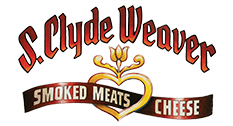




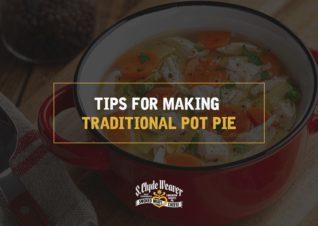
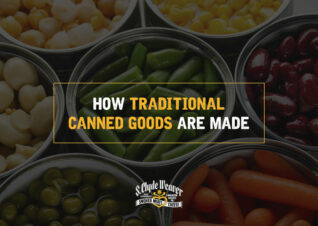

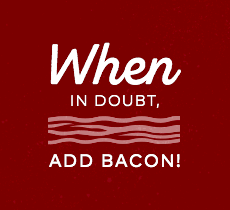

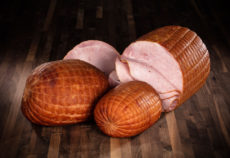

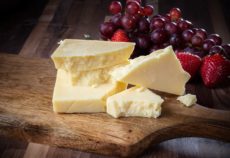
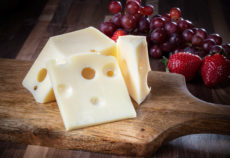
I use Pure white Balsamic Vinegar as a salad dressing, without any type of oil, as an addition to plain water as it cleans the palate, as a mouth rinse, gargle with it when I get the sniffles, sore throat, etc.Just add enough to water until it becomes tolerable. Olio Carli sells a very good White Balsamic Dressing and other Dark Types of Balsamic Vinegar, pure and blended olive oils and other Products of Italy. Imported to a shop in Maryland.
I am not a employee of Olio Carli.